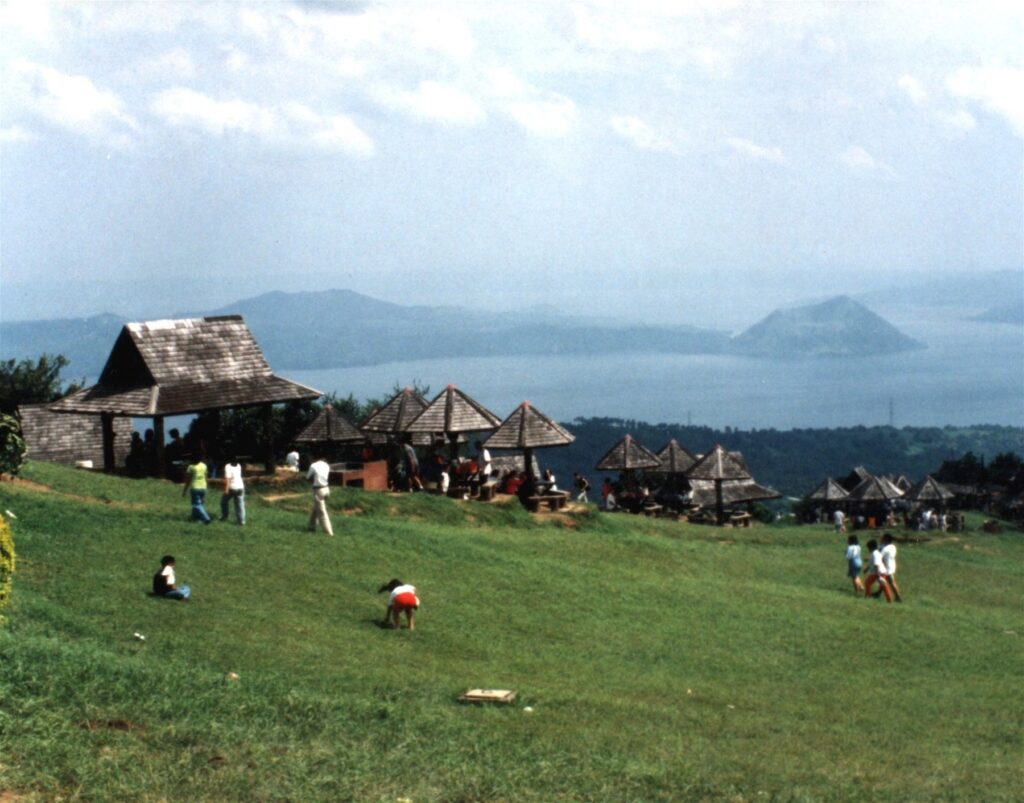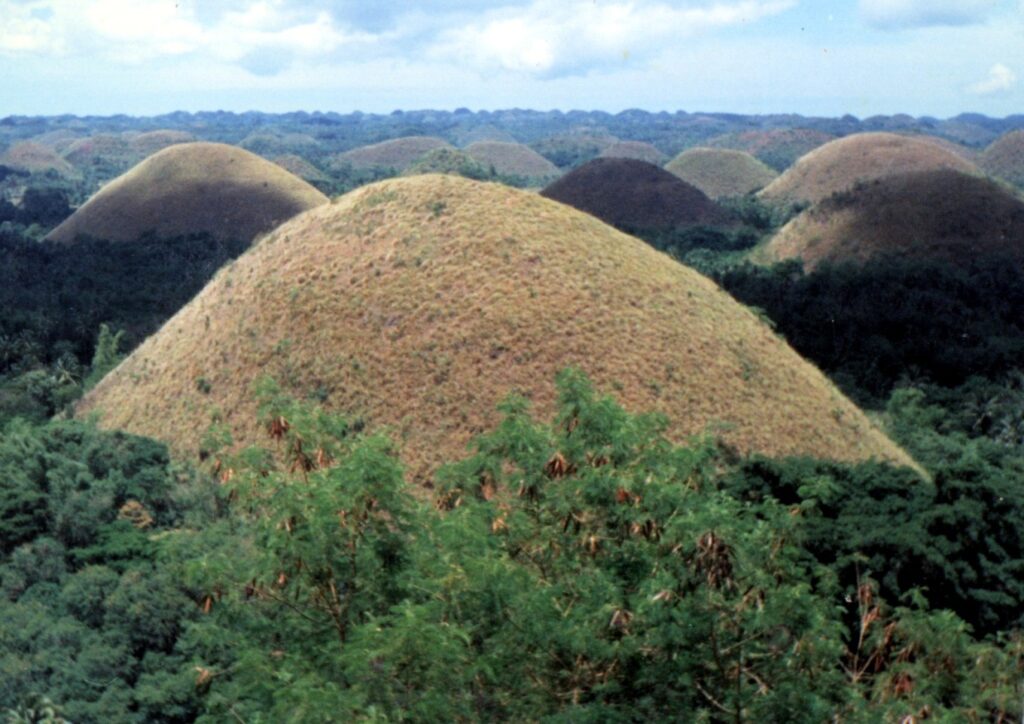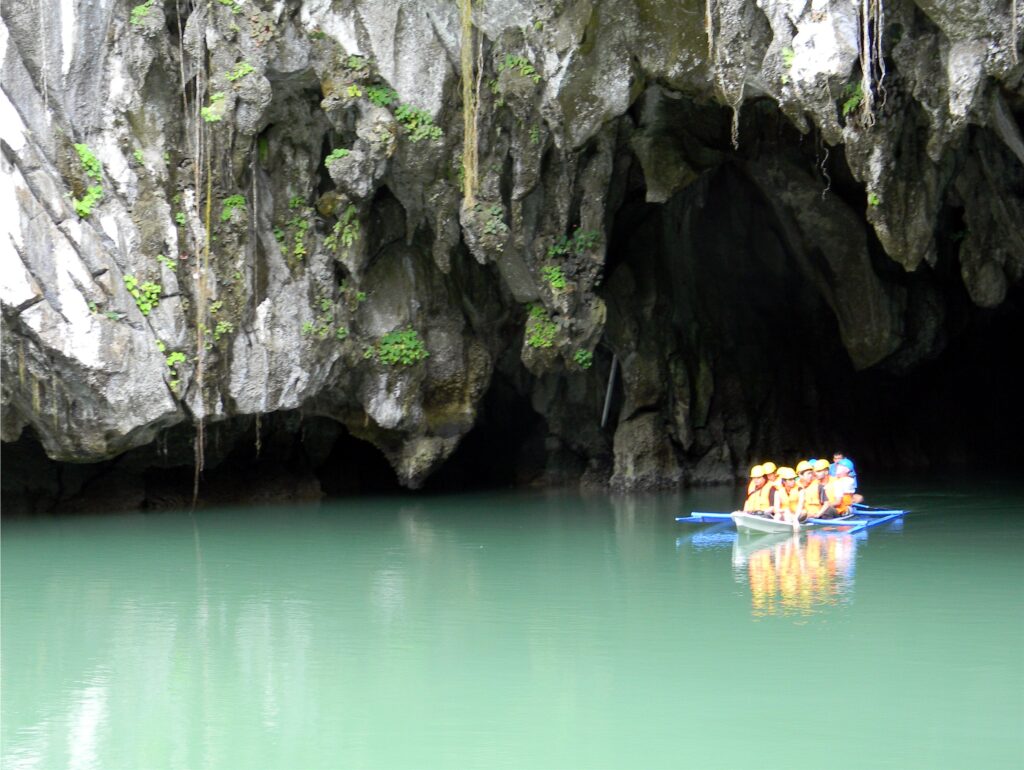Text and Photos by Henrylito D. Tacio
The Philippines is a country that comprises 7,107 islands. The places worth visiting are so numerous that tourists can only hope to see a few of them. But people who want to see only those that are truly unique to the country, then we suggest the Banaue Rice Terraces, Taal Lake, Chocolate Hills in Bohol, Saint Paul Subterranean River National Park in Palawan, and Aliwagwag Falls in Cateel, Davao Oriental.
Banaue Rice Terraces: Up in the northern Cordillera region, the rice terraced landscape captivates the visitors with its majestic appeal. It was carved out of the hillside by Ifugao tribes some 3,000 years ago without the aid of machinery to provide level steps where the natives plant rice.
What is even more surprising is that this is the only marvel of antiquity that is still being used today. Actually, the rice terraces stretch like stepping stones to the sky – some reaching an altitude of 1500 meters. If the terraces were laid end to end, it is about 13,500 miles long, or about half the world’s circumference and ten times the length of the Great Wall of China.
No wonder it has been described as the eighth wonder of the world. “In justice, (the rice terraces) should be called the first (wonder of the world),” argued an article which appeared in Clarin-Revista, a widely-circulated publication in Buenos Aires, Argentina. “For beside it, the pyramids of Egypt , the gardens of Babylon , or the Roman aqueducts are simple attempts at minor engineering.”
The Banaue Rice Terraces was named as a world heritage site by the United Nations Educational, Scientific, and Cultural Organization in 1995. In 2001, it was in-scripted to the list of world heritage in danger as dangers of deforestation, and climate change threatened to destroy the terraces.
Taal Lake: A lake is a lake, while a volcano is a volcano. But where can you find a lake and volcano together? Located south of Manila, Taal Lake is lying in the crater of a vast volcano. Within the lake is a smaller volcano containing a small lake in its 406-meter-high crater. The volcano is described as “a crater within an island within a lake” because it stands as an island at Taal Lake.
Taal Lake was formed after the volcano, which used to be much larger, collapsed. The ridges around Tagaytay City, which overlooks the lake, are believed to be part of the crater of the old volcano. The ridges now serve as the border of the 18-mile diameter Taal Lake and stretch 32 kilometers from Mount Batulao to Mount Sungay.

Chocolate Hills: Actually, it is a rolling terrain of haycock hills – mounds of general shape which are conical and almost symmetrical. Estimated to be at least 1,268 individual mounds to about 1,776, these cone-shaped or dome-shaped hills are actually made of grass-covered limestone. The domes vary in size from 30 to 50 meters high, with the largest being 120 meters in height.
During the dry season, the grass-covered hills dry up and turn chocolate brown. This transforms the area into seemingly endless rows of “chocolate kisses.” The branded confection is the inspiration behind the name Chocolate Hills.
“The Chocolate Hills are best observed at dawn or dusk,” wrote Jun Binamira in a travel guide on Bohol. “At these times, the sun is low and throws dramatic highlights and shadows onto the hills, making them leap out of the background in bold relief. Dawn is especially breathtaking. Usually, there is a thick white mist which lingers around the base of each hill. This magical moment lasts only seconds.”
Legend has it that the hills came into existence when two giants threw stones and sand at each other in a fight that lasted for days. When they were finally exhausted, they made friends and left the island, but left behind the mess they made.

For the more romantically inclined is the tale of Arogo, a young and very strong giant who fell in love with an ordinary mortal girl called Aloya. After she died, the giant Arogo cried bitterly. His tears then turned into hills, as a lasting proof of his grief.
However, up to this day, even geologists have not reached a consensus on how they were formed. The most commonly accepted theory is that they are the weathered formations of a kind of marine limestone on top of an impermeable layer of clay.
Underground River: Wonders await for those who see the famous Saint Paul Subterranean River National Park, a massive white rock mountain that rises 1,028 meters above sea level and stretches towards Cleopatra’s Needle. Its main feature is the underground river, with its 8.2 kilometers of labyrinthine caves carved by rainwater and the waves of the South China Sea.
Reputedly the world’s longest, the Subterranean River is a maze of intricate caves and endless wonders. Once inside, you can enjoy seeing a myriad of rock formations that resemble real things: giant mushrooms and jellyfish, a huge madre de cacao, a man and his dog, skeletal and pipeline structures, fragile stalactites that look like filigrees.

The most awe-inspiring, however, is the so-called St. Paul’s Cathedral, where you can actually find a gigantic candle with wax dripping at its sides and the Holy Family of Joseph, Mary, and Baby Jesus in his crib. Farther up is an angel perched on a limestone pedestal.
Aliwagwag Falls: Located in the middle of a tropical rainforest, Aliwagwag Falls is considered as one of the most beautiful waterfalls in the country with its breathtaking cascading water. The “stairway to the sky” is how some people called it.
Hydraulic engineers touted Aliwagwag Falls as the country’s highest. Actually, it is a series of 84 falls appearing like stairways with various heights among the steps ranging from six to 110 feet.
Aliwagwag Falls has been recognized as a terrestrial biodiversity corridor for eastern Mindanao. For one, it is a habitat of the endangered Philippine Eagle. About 40 species of birds, five species of mammals, three species of reptiles, and two species of amphibians have been identified to exist in the watershed that encompasses a total area of 10 491 hectares.

Aliwagwag Falls is “way off the tourist map and are known mostly to locals and intrepid adventurers. It is not even listed in international guide books, maybe because it is located in Mindanao and many foreigners are discouraged from going to this part of the island even though it is relatively safe.”
Truly, the Philippines is a unique country. You can’t find these natural wonders in other parts of the world. Only in the Philippines!

